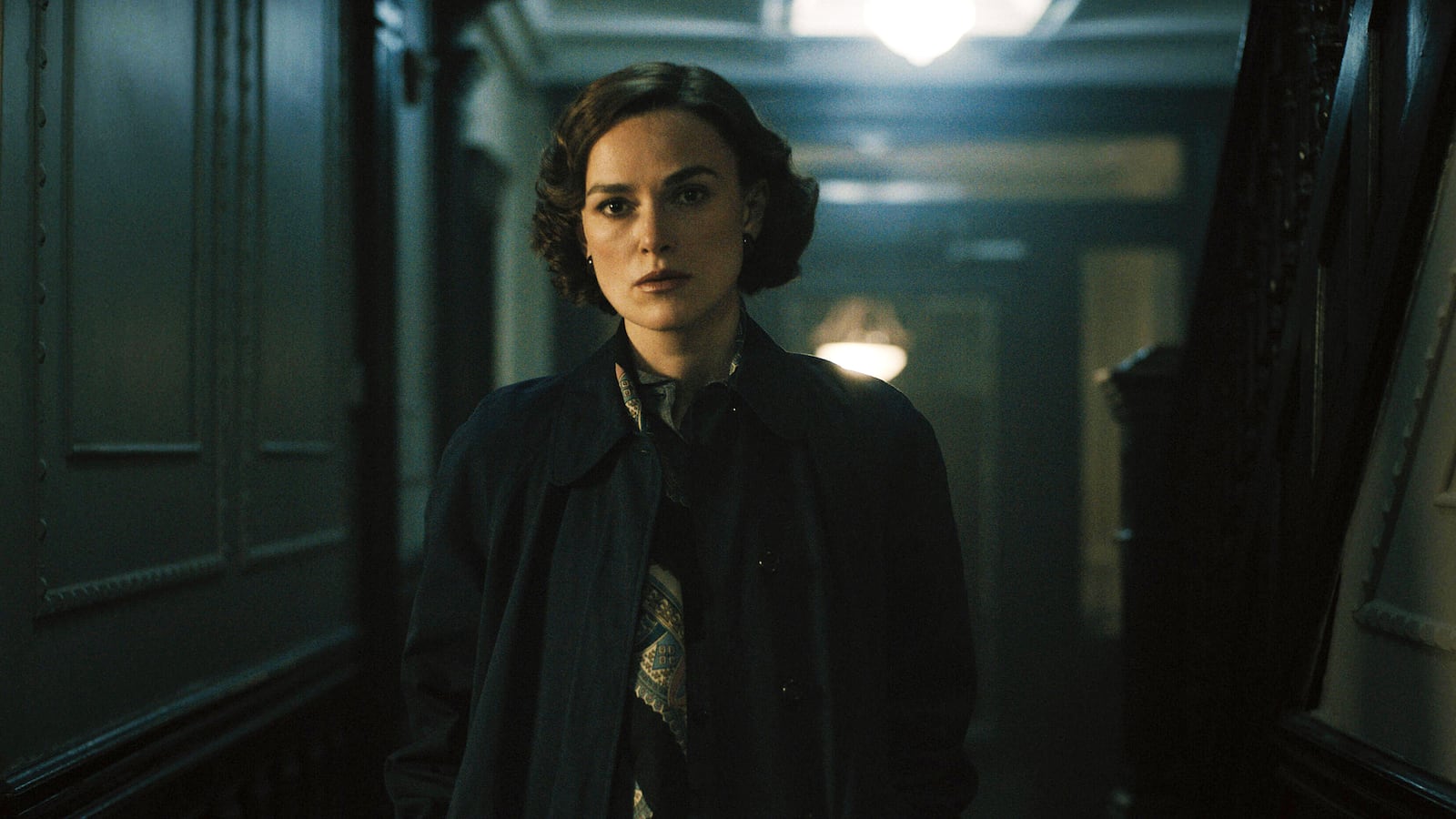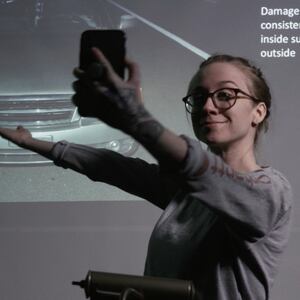Over the course of 18 months in the idealistic early 1960s, 13 Boston-area women were strangled and sexually assaulted. The elusive killer left behind a grotesque, ritualized crime scene, as if taunting the people who would come upon it. Bodies were left in suggestive positions. Nylon stockings or other items of their personal apparel had been knotted around their necks. Some had bottles, broomsticks or other foreign objects jutting out of their bodies. Propped up against the foot of the final victim, strangled on Jan. 4, 1964, stood a cheery greeting card that read, “Happy New Year!”
The so-called Boston Strangler terrorized a city and fascinated a nation, including my grandfather, Gerold Frank, an author and journalist who traveled to Boston and became the only writer embedded with the state task force overseeing America’s largest manhunt to date. His bestselling book on that hunt, The Boston Strangler, was adapted into a 1968 film with Tony Curtis and Henry Fonda, which spurred a true-crime cottage industry with great staying power.
On March 17, Hulu premiered the latest addition to the oeuvre with Boston Strangler, starring Keira Knightley and Carrie Coon as two pioneering reporters who break the story and pound the pavement until the truth comes out and a measure of justice is served.
Gerold interviewed every major figure in the investigation over three years of covering the case, including reporter Loretta McLaughlin, the Keira Knightley character. And his front-row seat to history tells a story that differed in important ways from the one coming to the screen this week.
The Hulu film, written and directed by Matt Ruskin (Crown Heights), portrays McLaughlin as a lonely truth-seeker pitted against a wall of obstacles, primarily men who are more interested in power and profit than learning the truth or obtaining justice. McLaughlin and her colleague Jean Cole (played by Coon) have to press investigators to do their jobs. Through their dogged reporting, they identify a prime suspect, a handyman named Albert DeSalvo, whom the police, in their ineptitude, had thought was behind bars during the killing spree and couldn’t have been the perpetrator. It’s because of the women’s tenacity that the state finally takes over the hunt for the man, or men, responsible for laying siege to the women of Boston.
In the second half of the film, having almost single-handedly brought the investigation to life, McLaughlin begins to doubt there was just one killer. A witness identifies not DeSalvo, but his cellmate George Nassar, as being at the crime scene, and a conspiracy theory is birthed: Studying press reports with details of the crimes, the inmates collude to pin the stranglings on DeSalvo so the men can split the reward money for solving the crimes. DeSalvo makes a false confession, coached on the murder details by an investigator eager to close the case. DeSalvo’s lawyer, the notorious F. Lee Bailey of O.J. Simpson fame, keeps the confession out of court while securing a book deal that would pay DeSalvo a fortune (and the lawyer’s enormous fees). And the police and state officials, shielded from scrutiny by male newspaper editors, declare victory to a city desperate to move on, basking in the glory of having rescued Boston’s women from a reign of terror.
“You all created a myth,” Nassar tells McLaughlin, who finally gets ahold of tapes that, in the film, confirm the confessions were coached. People wanted to believe it was DeSalvo, he explains, because the alternative was too disturbing—that there are many DeSalvos out there, “and your safe little world is just delusion.” At the end, an “s” is added to a headline to indicate the new consensus that there are multiple “Boston Stranglers.”
The film’s message is clear: As McLaughlin says, “No one bothered to get to the truth, and people got away with murder.” Men, in particular, sought political, personal, and financial gain ahead of concern for the views or safety of women.
The trouble is that the real McLaughlin never believed in the conspiracy tale the film depicts, specifically the view that there were multiple killers. (The film says it was “inspired by” real events, though an earlier script said it was “based on a true story” and press material still calls it that.) In 1965, in the midst of the hunt, she told my grandfather that it defied logic that there would be multiple psychopaths running around Boston strangling women and arranging the crime scenes into similar, grotesque patterns. She reiterated her belief in a single killer in a 1992 op-ed, and said in a 2005 interview about the 13 murders that “the killer, I am convinced, was Albert DeSalvo, no question.”
The film’s timeline is compressed, a reasonable capitulation to the demands of cinema but one which also eases the fictionalization of key plotlines. In reality, McLaughlin had left the paper by the time DeSalvo became a suspect. In fact, DeSalvo was not publicly named as the strangler until 1966, when my grandfather printed the link in his book. (He was the only one to get a release from DeSalvo allowing him to do so, the so-called book deal that F. Lee Bailey struck for DeSalvo.) This was nearly three years after the stranglings ended. It was not McLaughlin, but reportedly a detective, who realized that DeSalvo was out of jail during the murders and thus a viable suspect. In other words, she didn’t crack the case.
McLaughlin’s actual story is already remarkable. She was an intrepid and deeply empathetic reporter who broke barriers in what was often an all-male newsroom that referred to any woman crossing the threshold as a “girl.” She convinced her male editors to let her investigate a string of murders that many initially failed to notice or dismissed as a story about “nobodies.” And she played a key role in moving that investigation forward. (She died in 2018.)
So why does the film need to turn her into a conspiracy theorist, and to credit her with feats that weren’t hers, and didn’t need to be in order for her to be a great heroine?
The film is a fun watch, particularly the second half, when a routine procedural becomes, well, a conspiratorial thriller. And in fairness, the reality of this case is that the theory of multiple killers papered over by a giant coverup has been with us since the stranglings began, and not without reason. DeSalvo was never tried for the murders, in large part because Bailey shielded his confession from being admitted. He was stabbed in prison in 1973, shortly after hinting in a letter that his confession might have been false, which naturally fed more conspiracies that DeSalvo was not the killer and was part of the coverup.
Yet while DeSalvo was never convicted of the murders, the evidence is overwhelming that he was the strangler. His confession, which my grandfather was the only journalist to hear at the time it was made, referenced extensive crime details no one else could have known. (Many have focused on the details he got wrong, but he is believed to have raped hundreds of women in their homes, and what astounded investigators was not how much he didn’t remember but how much he did.) Several witnesses placed him at the locations of the murders. And in a 2013 development that should have laid doubts to rest, new DNA evidence made possible by advances in testing technology finally confirmed the link between DeSalvo and the last victim, whose family had been most active in questioning whether DeSalvo was responsible. The best evidence we have all points to DeSalvo.
So why does the conspiracy theory live on, evidence and logic be damned?
The standard sociological interpretation of the appeal of conspiracy thinking is it gives people clean, easy answers and a sense of control and moral righteousness in a world that’s actually layered, complex, and indeterminate. There’s merit to this analysis. The film version of McLaughlin is a composite figure, a sponge for a male conspiratorial fantasy, if one with a #MeToo bent. The film vests her with views she didn’t hold, in service to a storyline that feeds a need to believe in good women (who bother to get at the truth), and bad men (who only care about power and profit). It then uses her as a vehicle to spin out a hackneyed, Oliver Stone-style conspiracy theory, with a shadowy coverup at its core.
Yet the actual truth is, as Nassar says in the film, more disturbing: There are many DeSalvos out there, as seen in the rise in mass shootings, the mental health crisis, and the senselessness of violence’s entry into more and more areas of our lives. The movies invite us to indulge in great stories, in delusions of safety, heroism, and redemption. But when the screen goes dark, we must reckon with reality: We live in a violent, disorienting time with no easy answers or safe harbors, and a continuing imperative to get at the truth, whether it entertains, comforts, or disturbs us.







